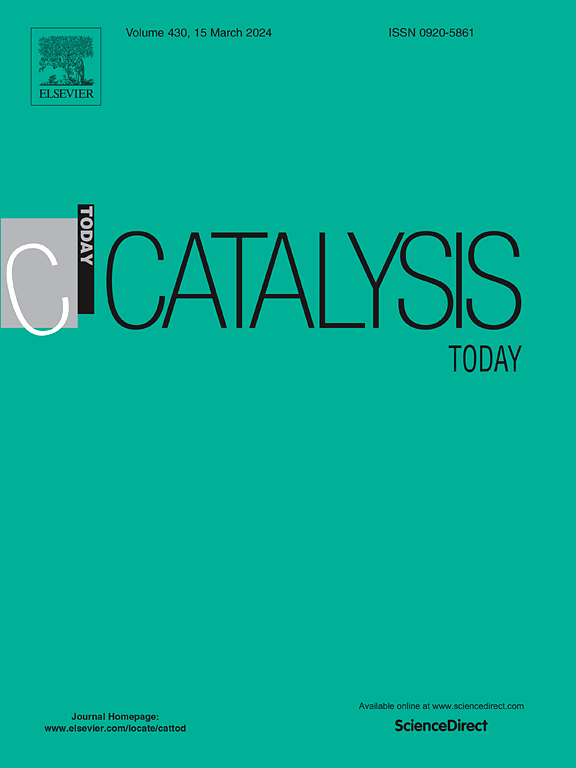Efficient recycling of polyamide 6 to ε-caprolactam under mild conditions
IF 5.2
2区 化学
Q1 CHEMISTRY, APPLIED
引用次数: 0
Abstract
Polyamide 6 (PA6) is a kind of engineering plastic containing N atoms, the low activity of amide linkage makes it hard to recycle under mild conditions. In this work, a solid acid catalyst, L-Nb2O5 is applied to convert PA6 into ε-caprolactam and as high as 82.2 % yield was achieved at 260°C, a relatively low temperature with THF as solvent. The catalyst can be used for 5 times with little decline of catalytic activity, and can be regenerated through calcination. Catalytic mechanism investigation reveals that Lewis acidity rather than acid concentration plays a decisive role in depolymerization, whereas Brönsted acid sites exhibit an inhibitory effect on the process. Enhanced specific surface area facilitates the exposure of more acidic sites, thereby promoting depolymerization efficiency. Systematic cyclic stability assessments and scaled-up experiments confirm the system's robustness and practical viability for industrial implementation. This study ultimately establishes a facile and efficient methodology for achieving closed-loop recycling of polyamide 6 (PA6) to ε-caprolactam (CPL) through rational catalyst design.
在温和条件下聚酰胺6高效回收制备ε-己内酰胺
聚酰胺6 (PA6)是一种含N原子的工程塑料,酰胺键活性低,在温和条件下难以回收。本研究采用固体酸催化剂L-Nb2O5将PA6转化为ε-己内酰胺,以THF为溶剂,在260℃较低的温度下,产率高达82.2 %。该催化剂可重复使用5次,催化活性几乎没有下降,并可煅烧再生。催化机理研究表明,Lewis酸度而不是酸浓度在解聚过程中起决定性作用,而Brönsted酸位对解聚过程具有抑制作用。增强的比表面积有利于暴露更多的酸性位点,从而提高解聚效率。系统的循环稳定性评估和放大实验证实了系统的鲁棒性和工业实施的实际可行性。本研究最终建立了一种简单有效的方法,通过合理的催化剂设计实现聚酰胺6 (PA6)闭环循环生成ε-己内酰胺(CPL)。
本文章由计算机程序翻译,如有差异,请以英文原文为准。
求助全文
约1分钟内获得全文
求助全文
来源期刊

Catalysis Today
化学-工程:化工
CiteScore
11.50
自引率
3.80%
发文量
573
审稿时长
2.9 months
期刊介绍:
Catalysis Today focuses on the rapid publication of original invited papers devoted to currently important topics in catalysis and related subjects. The journal only publishes special issues (Proposing a Catalysis Today Special Issue), each of which is supervised by Guest Editors who recruit individual papers and oversee the peer review process. Catalysis Today offers researchers in the field of catalysis in-depth overviews of topical issues.
Both fundamental and applied aspects of catalysis are covered. Subjects such as catalysis of immobilized organometallic and biocatalytic systems are welcome. Subjects related to catalysis such as experimental techniques, adsorption, process technology, synthesis, in situ characterization, computational, theoretical modeling, imaging and others are included if there is a clear relationship to catalysis.
 求助内容:
求助内容: 应助结果提醒方式:
应助结果提醒方式:


